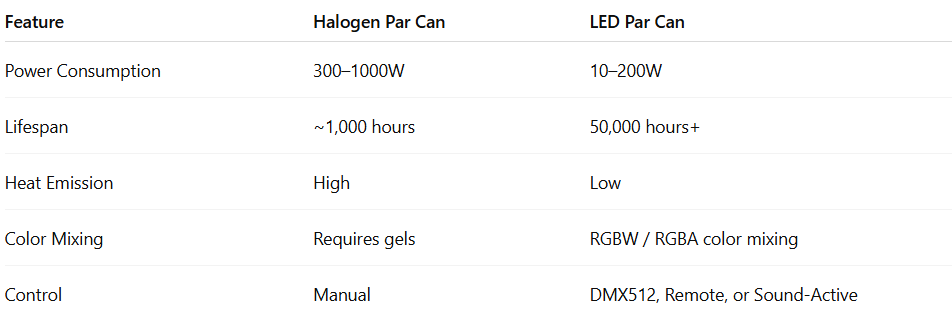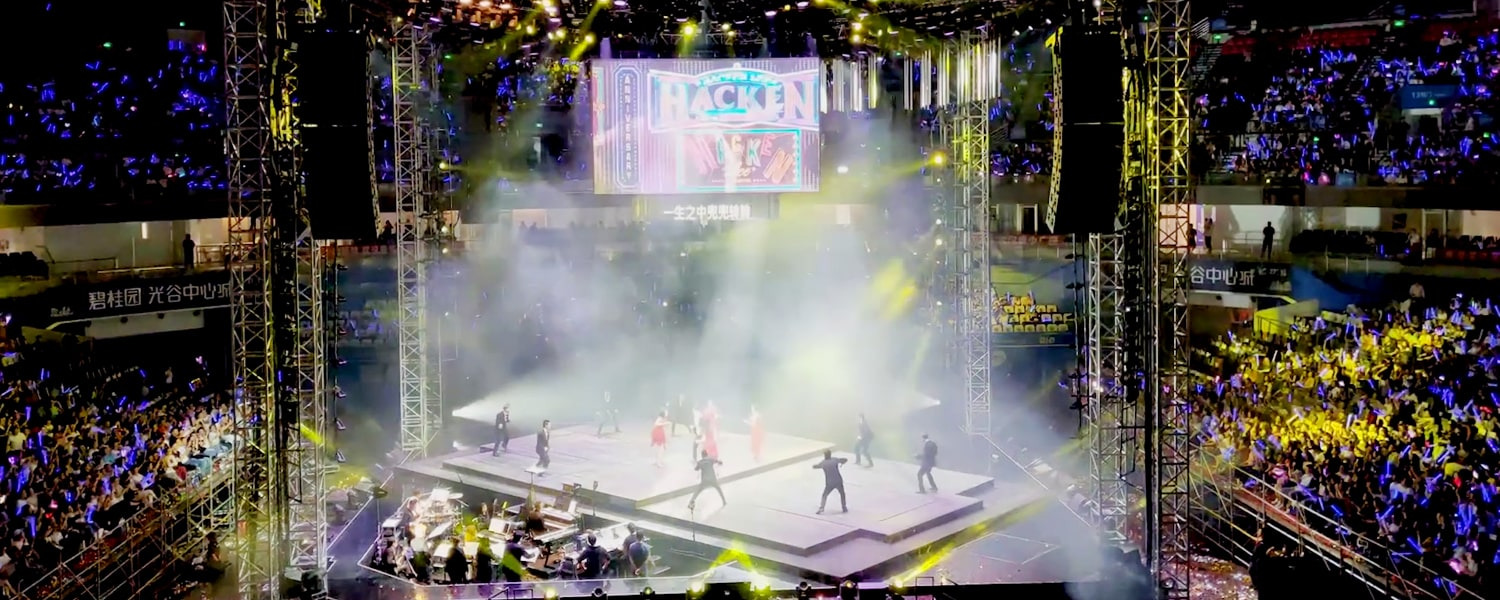At Rasha Professional, we understand that lighting isn’t just about illumination—it’s about creating an experience. Among the most versatile and dependable tools in any lighting designer’s arsenal are LED Par Can lights. Whether used for stage performances, architectural uplighting, or event ambience, LED Par Cans combine efficiency, power, and control flexibility that make them indispensable in professional setups.
Choosing the right LED Par Can light for your venue requires more than just picking a model off the shelf. It involves understanding beam angles, power efficiency, color rendering, DMX control options, and even the environmental conditions in which your fixtures will operate. In this guide, we’ll walk you through the critical technical and practical factors that define the best LED Par Can light for different venue types—helping you make an informed, professional-grade decision.
Understanding What LED Par Can Lights Are
The Evolution of Par Can Lights
“Par Can” stands for Parabolic Aluminized Reflector, originally developed for stage and film lighting using halogen lamps. Traditional Par Cans used incandescent or halogen bulbs that consumed significant power and generated substantial heat. With the advent of LED technology, these legacy fixtures evolved into LED Par Can lights—offering brighter output, cooler operation, and far greater efficiency.

The shift to LED not only reduced power draw but also revolutionized color control and versatility. Instead of relying on color gels, modern LED Par Cans mix red, green, blue, and white (RGBW) or red, green, blue, and amber (RGBA) channels electronically, allowing for millions of color variations.
Factors to Consider When Choosing LED Par Can Lights
Selecting the right Par Can involves evaluating your venue, lighting objectives, and environmental demands. Below, we break down each major factor.
Venue Type and Application
The first step in choosing your LED Par Can is identifying your venue’s type and purpose. Each environment demands different beam strengths, mounting methods, and control options.

At Rasha Professional, we recommend that buyers always begin by mapping out their lighting goals per area—for instance, stage wash, wall uplighting, or audience ambient lighting. This ensures you’re specifying the right fixture for the function.
Light Output and Beam Angle
Beam angle defines the spread of the light. A narrow beam (10°–20°) focuses light like a spotlight, ideal for accent lighting or highlighting performers. A wide beam (30°–60°) washes broader surfaces such as walls or stages.
Practical Example:
A 25° LED Par Can placed 5 meters from a surface will produce an approximate coverage diameter of 2.3 meters. By contrast, a 45° beam angle will cover nearly 4 meters at the same distance.

For stage applications, we often recommend multiple beam angles for different zones: narrow beams for performers, and wide beams for backdrop or ambience.
Color Mixing and Temperature
Modern LED Par Can lights achieve color versatility through additive color mixing. The most common configurations include:
- RGB (Red, Green, Blue): Basic color mixing, suitable for dynamic light effects.
- RGBW (Red, Green, Blue, White): Adds pure white for improved color accuracy and brightness.
- RGBA (Red, Green, Blue, Amber): Enhances warm tones for theatrical or natural environments.
- RGBWA or RGBWA+UV: Advanced color models for maximum creative flexibility.
Real-World Examples and Setup Tips
Concert Stage:
Combine multiple 100W RGBW Par Cans with narrow beam (15°–25°) for focused performer lighting. Use DMX linking for color coordination and strobe effects.
Banquet Hall:
Use 40° RGBW Par Cans for wall washing and ambience. Program warm white presets (3000K) for dinner events and cool tones (5000K) for presentations.
Church or Worship Venue:
Opt for silent, fanless convection-cooled fixtures. Set up zones with DMX for sermon focus vs ambient color mood lighting.
Outdoor Festival Stage:
Deploy IP65-rated Par Cans with 30° beam spread. Wireless DMX simplifies rigging and reduces cabling hazards.
All Rasha Professional Par Cans meet CE and RoHS compliance, ensuring safety and reliability in professional use.
Maintenance and Lifespan Optimization
Even though LED fixtures are low-maintenance, proper handling extends longevity.
Maintenance Tips:
- Keep vents free from dust using compressed air.
- Inspect DMX cables and connectors periodically.
- Avoid overloading circuits beyond manufacturer recommendations.
- Store in dry, temperature-stable environments.
- For fan-cooled models, check fans annually for quiet operation.
Rasha Professional LEDs typically deliver 50,000+ hours of performance under standard operating conditions—equivalent to over 5 years of daily 10-hour use.
Conclusion
Choosing the best LED Par Can light for your venue is a strategic decision that combines art and engineering. From understanding beam angles and color mixing to evaluating IP ratings and control systems, every detail contributes to the performance and visual impact of your lighting design.
At Rasha Professional, we pride ourselves on engineering LED Par Can lights that meet the exacting standards of lighting professionals worldwide. Whether illuminating concert stages, architectural structures, or corporate environments, our fixtures are designed to deliver unmatched precision, durability, and energy efficiency.
When selecting your next lighting system, prioritize technical compatibility, long-term ROI, and reliability under real-world conditions—and let Rasha Professional help you bring your venue to life with light.
FAQs
Q1: What wattage LED Par Can do I need for a 500-seat auditorium?
For a medium-sized 500-seat hall, we recommend 80–120W LED Par Cans with a 25°–35° beam angle, spaced evenly across trusses to ensure balanced illumination.
Q2: Are all LED Par Can lights DMX compatible?
Not all are. Entry-level models may have manual or remote-only control. Always verify DMX512 support for professional setups.
Q3: What’s the ideal beam angle for a small stage?
For stages under 10 meters in width, 25°–40° beam angles are optimal to balance coverage and focus.
Q4: Can LED Par Cans be used outdoors?
Yes, but ensure an IP65 or higher rating for protection against dust and rain.
Q5: What is the difference between RGBW and RGBA in LED Par lights?
RGBW adds a pure white LED for clean, neutral tones, while RGBA adds amber for warm, natural shades ideal for theatrical lighting.
Q6: How long do LED Par Can lights last?

